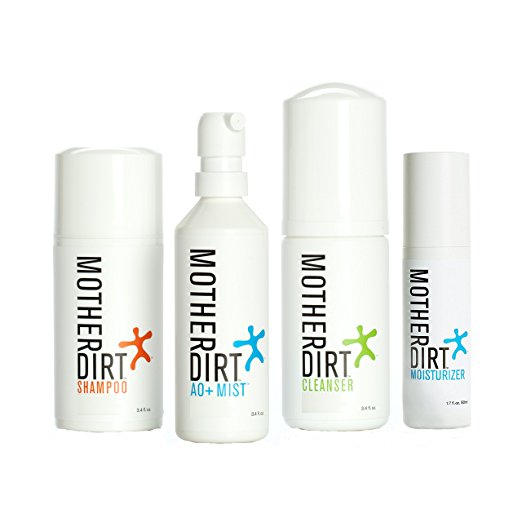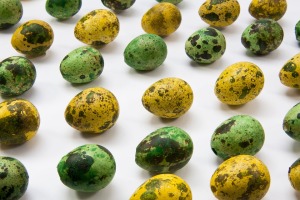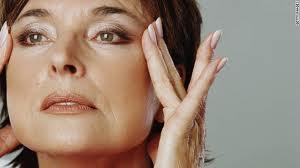
Some time ago I wrote an article for About.com about the so-called caveman regime which simply means you stop washing your face. I’m definitely one of the last people to tell you to stop washing your face. My belief in how important face washing is was only strengthened by what I read happened to people’s faces when they stopped washing them.
There are a variety of reasons why people decide to stop washing their faces – their skin is sensitive and they feel like facial cleansers are harming their skin instead of helping it, they think they are applying too many chemicals and products to their faces, or they connect a certain lifestyle choice (like eating a Paleo diet) with not washing their face, i.e. do as the cavemen would have done. As I already wrote above after reading about what happened to people’s skin when they didn’t wash their face, I definitely was not about to try this myself. I’m the last person who wants a build up of dead skin cells all over their face.
One part of what I read about these no-wash experiments was intriguing – people who had sensitive, easily irritated skin found that their skin calmed down after they stopped washing it. This could be true because of what happens when you stop washing your face. Firstly, dead skin cells build up and literally sit on top of your skin, but not washing can actually restore your skin’s protective barrier (or acid mantle) which potentially could mean your skin will start “behaving” better – will be calm, acne free, less irritated, not red, etc. By not washing your face you are allowing your skin to perform its duties – protecting, hydrating, and healing. One reason for someone’s skin improving in both look and texture after they stop washing it or stop using all other skincare products as well is the fact that bacteria, good bacteria, starts proliferating on the surface of the skin. This good bacteria helps to kill acne causing bad bacteria and provides the skin with protection from outside sources that can irritate it. The more good bacteria on your skin means that skin conditions like eczema and rosecea won’t flair up as much.
The idea of increasing the good bacteria on the skin, allowing the skin to heal itself, and just basically getting out of the way of “interfering” with your skin’s functions is a skincare idea that I find very intriguing even though my own daily, far from minimalist skincare routine is the opposite of those skincare ideas. I’ve been reading about bacteria and probiotics (good bacteria) in skincare products for years and wrote a post on this topic in the past. While not every expert thinks that applying topical skincare products with pre-biotics, probiotics, or bacteria to the skin is helpful, the number of products with these ingredients keeps growing (pun intended). There is also the fermented skincare trend which came to the West from South Korea.
Mother Dirt Products
At this point you are probably wondering what all this has to do with photo at the top of this blog post. Let me explain. After my article on not washing your face was published on About.com I received an email from a PR person asking if I wanted to try Mother Dirt products. What did my article have to do with this company’s products? Well Mother Dirt sells bacteria to spray on your body and heal your skin. Yes, bacteria you spray on your face or somewhere else on your body.
This product is far from something that was created overnight in order to jump on a skincare trend. In May, 2014 an article appeared in The New York Times Magazine that chronicled the writer’s experience with not washing (body or hair) for a month and twice a day spraying her body and hair with ammonia-oxidizing bacteria instead. After an initial gross period, the writer reported that her skin was softer, smoother, and breakout free because good bacteria had started to grow on her skin. Once the month ended and the writer went back to using regular skincare products and washing as she had before the good bacteria disappeared from her skin.
The skin friendly bacteria discussed in this article eventually made its way into Mother Dirt’s signature product – AO+ Mist, and is now available for all consumers. While the Mother Dirt website is very thorough and is great at explaining both the science and the everyday use of their products, I’ll elaborate a little bit here as to what the product is supposed to do. Mother Dirt’s proposes that in today’s world people are “too clean”, washing down the drain on a daily basis the good bacteria on their skin that is supposed to protect our skin and keep it healthy. When this occurs our skin suffers – becomes sensitive and easily irritated, red, acne appears regularly, and our skin is dry. Having healthy skin is as easy as spraying this mist on our skin at least once a day. The company says that with regular use you won’t need as many skincare products including deodorant. Keeping all this in mind I was obviously intrigued. So when the company offered to send me some products to try for free I jumped at the chance.
My Experience Using Mother Dirt
My Mother Dirt products arrived via messenger in a cool, silver padded envelope (yes, I am easily impressed by shiny things). The company sent me a few bottles of the AO+ Mist, their cleanser (which has no SLS, more on that later), and their moisturizer to try for free. The company also makes a shampoo that they did not send me to try which is too bad since I would have loved to try it. I suffer from seborrhea on my scalp and always use a special, medicated shampoo so I would have been happy to see if this product would have helped to relieve my itchy scalp. The real star here in the AO+ Mist. The other products are meant to treat your skin gently without getting in the way of the good bacteria that is supposed to start growing on your body.
I decided that everyone in my family needed to try the products. My husband suffers from dry, itchy skin, my son has dry skin, and my daughter has easily irritated skin. I did momentarily consider ditching all my facial serums, nightly retinol cream, and morning peptide cream to see how my skin would react to spraying the bacteria on it, but I just couldn’t do it. Instead I decided to use the spray twice a day on my chest. My chest is an area of skin embarrassment for me. It is covered by red dots that sometimes have white heads on them. At first I thought I had acne there and tried to treat my skin for acne. Nothing changed. Eventually I realized that I simply had skin irritation in that area that looks like a lot like acne. I always think twice before wearing a shirt with a v-neck because the area is most unsightly. I hoped that using the AO+ Mist would clear up my skin irritation by helping my skin heal itself.
My husband and son dropped out of this skin routine experiment a day after they started. They had no interest in remembering to use the spray. My daughter is still quite young so she had no choice other than to be part of this experiment. I used the spray on her after bath time, washed her with the soap, and moisturized her with moisturizer. I sprayed the mist on my chest and underarms, washed with the soap, and moisturized with the moisturizer.
I was pleased to see that the soap was SLS free. SLS can be quite irritating to many people’s skin and though some companies have taken it out of their products it is still very widely used. I’ve decided to avoid SLS for my daughter’s skin since she has experienced red, itchy skin in the past that cleared up once I started using a SLS free soap on her skin. Despite having no SLS in it, the soap still foams very nicely and cleaned the skin well yet gently.
Mother Dirt states that when it comes their moisturizer less is more which turned out to be true but it took me time to realize just how much I really needed and how to use it. In addition, if you think of moisturizers as always being creams this product will confuse you since it is a liquid. It feels and looks like an oil. It does moisturize effectively once you get used to its feel and figure out just how much you need. I can’t say how long it will actually last you, but I think you could easily have it on hand for about 2 months or more.
But you are probably wondering about the bacteria spray more than any other product I tried. You need to keep in in the refrigerator once you open it (or even before) so it is cold when you spray it on your skin. This made the product less than pleasant to use during the winter. Though I did spray it once or even twice a day on my underarms since it was winter I really couldn’t tell if it helped balance out the bacteria in that area and made deodorant less necessary since I don’t need much deodorant as is during the winter.
Now did the mist helped heal the skin irritation on my chest? Well yes it did! It took over a month to see a difference which didn’t surprise me since real skin changes take time. I didn’t wash that area with soap during the time I used the spray (not even with the Mother Dirt soap), but water did wash over the area each time I showered. My skin finally became little, red bump free after using the AO+ Mist. BUT as soon as I stopped using the spray the bumps returned which is quite frustrating.
When it came to my daughter’s skin the products kept her sensitive skin irritation and rash free. Her skin was also soft. I passed along one bottle of the AO+ Mist to a friend who had hormonal breakouts on her back. She definitely saw an improvement in her bacne after regularly using the product.
Would I Recommend Mother Dirt?
I would definitely recommend Mother Dirt products for people with sensitive, easily irritated skin, and those who suffer from regular breakouts. These products will not get rid of hyperpigmentation for example or treat cystic acne, but they definitely can be helpful for people with sensitive skin. People who want products with few and easily understandable ingredients will like Mother Dirt’s products. I applaud the company’s transparency and innovation.











Recent Comments